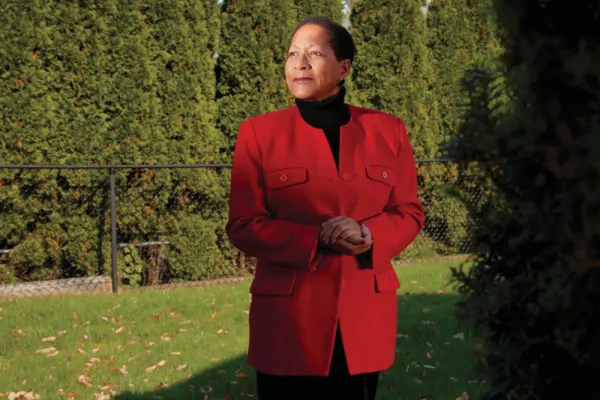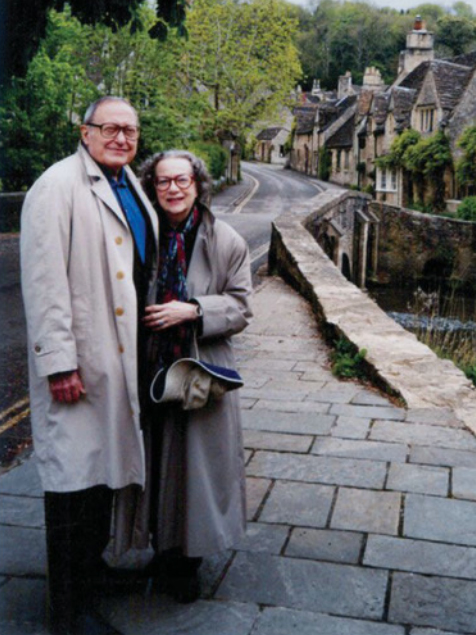Culture of Care
Alum News

Published December 15, 2018
Nancy Davis O’Hara ’82 had no role model for being a caregiver for her mother.
She grew up in a small family in Massachusetts far from her extended family in the South. When her father was diagnosed with bladder cancer, he kept the disease a secret, even from his wife, until shortly before his death. “I wouldn’t have understood caregiving from the little I saw,” she says.
So when O’Hara’s mother needed looking after, she took her cues from her husband. “He grew up in a big family with lots of cousins, many living a stone’s throw from each other,” she explains. In that Irish immigrant culture, she says, “You take care of your elders.”
Although caregiving is a nearly universal experience, not everyone experiences the issue in the same way. Gender, culture and even sexual identity all play a part.
Benjamin Capistrant, assistant professor at the Smith School for Social Work, looks at caregiving within and across different populations. In India, for example, there is a strong multigenerational structure for caregiving with specific expectations for who gives care to family members. Parents care for their parents, as their offspring look on. “It’s as if they’re saying, ‘This is what we do for each other, and this is what I expect you to one day do for me,’” Capistrant says.
Another model comes from the LGBTQ community, which has developed caregiving networks based on chosen family, he says. Since many gay couples don’t have children of their own, elders in that community can’t always rely on offspring to help out. Also, many members of the LGBTQ community lose family support when they come out. Plus, Capistrant says, “Some lessons have been learned from the AIDS epidemic,” when gay men and lesbians worked together to develop care networks and advocacy strategies for people suffering from a disease that was inadequately addressed, or downright ignored, because of institutional homophobia. New models of care by chosen families arose, and a blend of activism, compassion and care saved lives and offered comfort to the dying and grief-stricken survivors, says Capistrant.
Just as the approaches to caregiving vary by culture, so too do the effects on the caregivers themselves. White caregivers, for instance, are more likely to report stress-related conditions, including increased risk of cardiovascular disease, hypertension and depression, Capistrant says. According to various studies, including a 2015 study published by the Journals of Gerontology, members of communities of color more often rate positive aspects of caregiving more highly than Caucasians do, Capistrant says.
Based on work he and his colleagues are engaged in, he speculates that in communities that think more collectively, caregiving may be less psychologically taxing. “They see that this is an expression of my love for this person,” he says.
In reporting for her book, The Caregivers: A Support Group’s Stories of Slow Loss, Courage, and Love, Nell Lake ’89 witnessed how caregiving support groups themselves can create the culture of care that families might not have access to through their own networks of kin. The support group she wrote about met in a basement room at Cooley Dickinson Hospital in Northampton. Lake recalls that descending into that windowless space, cocooned by the sound of whirring fans, felt like entering a private and confidential realm. There, people caring for family members could share a range of emotions and receive empathetic attention, as well as share resources and advice. It gave them a sense of being part of a larger world.
In “What Remains Is Love,” alumnae caregivers share their stories of love, meaning and purpose while supporting family members in need.
The proliferation of caregiver support groups—the burgeoning Alzheimer’s community is a good example—has helped to catalyze greater awareness of, and research about, caregiver needs and best practices. Capistrant points to a 1996 study published in the Journal of the American Medical Association, which showed that spouses who received counseling and attended support groups were able to keep their loved ones with Alzheimer’s home longer, thus delaying nursing home admission and cutting expenses related to long-term institutional care.
Although caregiving, like much of women’s traditional work, primarily takes place in the private sphere, it also has implications in the wider world. The caregiving work at home may have negative health consequences, which can affect employee productivity and businesses’ bottom lines.
“It’s important for caregivers—and especially women—to realize that while this is a very private activity,” Lake says, “it is also part of a very public issue.”
This story appears in the Winter 2018-19 issue of the Smith Alumnae Quarterly.
After Him
Perfected over six decades, ‘this marriage thing’ transcends all
by Ruth Wolff ’53
We were told, of course, but we didn’t believe it.
The oncologist broke it to us this way: “If there’s anything you want to do before you die, do it now.”
It seemed a harsh sentence. (“Sentence” in both senses of the word.) And so shocking and unexpected that our minds rejected it completely. And we headed into that last year—it turned out to be nine months—with hope, like a great new adventure.
We had been together for more than 60 years. We had faced tremendous highs and tremendous lows. We had weathered it all. And we were still here.Together. In our own world, the world we had made, through thick and thin, through having a child (a man now, with a distinguished career, a wife and children), through professional—architect and playwright—challenges, through personal challenges, through hardships and triumphs.
And now we were facing this.

Ruth Wolff and her husband, Martin Bloom, in Bath, England, on a 50th anniversary trip.
The days were filled with visits to medical facilities and treatments and ordering pills and taking medications and preparing increasingly soft foods. Busy, busy days—wakeful nights—where, in the wee hours of the morning, we met at a small table at what we came to call our Midnight Café. I gave him Tylenol and an energy drink and we talked of the day’s news, and returned to, now, our separate beds in our separate rooms.
It was a trial, a year from hell, an increasingly desperate journey—and yet—and yet—. Looking back now, alone, I see that what was happening was a growing of love, so deep, so strong, so—divine—that the thought of it now nourishes and sustains me.
I had believed in “love.” Had thought about it. Written about it (sometimes, I thought, obsessively), but I never knew it to the “depth and breadth and height” to which we began to know it now. We had, after over six decades of living side by side, sharing everything, knowing each other, caring for and about each other, we had, at last, perfected this thing called “marriage”—this sharing, this two-in-
one thing—this united “marital soul.”
In this time of trial, whose inevitable end we both refused to see, the love we had for each other had become so strong it was transcendent.
It was there. It strengthened through every day and every trial. It saw us through.
And now that he is no longer here—that lover—that light—still upholds me. It is as strong now as it was in its strongest moments. Stronger.
And when people wonder why I am not falling apart (they do not see those sudden brief bursts of private weeping)—when they wonder how I can go on without him—when they say they’re “sorry he’s gone”—I say, “He isn’t gone. He’s still here.”
And he is.
That protective warmth we had for each other is still here. Giving me strength. Helping me walk on. Giving me courage to continue.
There is no after him. There was him and me. There was—there still is—will always be—us.
In that last year of trial we were honing, polishing, sculpting, perfecting this thing—this marriage thing—we had begun decades ago. And now the work was—at last—finished. After more than six decades we had finally completed this sculpture we had started so long ago. It was all done. As polished and perfected as it could be. Would ever be.
With him gone, it still stands, as shining and fine as ever. Solid. Indestructible.
We, of course, are destructible.
But what was—still is.
Will always be.
Forever.
Ruth Wolff ’53 of New York City is a playwright and screenwriter.
Photograph by Dana Smith